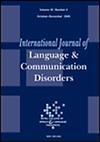Assessing Functional Communication in Persons With Aphasia: A Scoping Review of Formal and Informal Measures
Abstract
Background
The communicative effectiveness of persons with aphasia (PWA) has been assessed through a range of functional communication measures. However, variability in interpretations of what is covered by the term “functional communication” may have resulted in challenges to the implementation of appropriate and consistent patient-centred evaluations, with different measures focusing on subsets of the components of functional communication.
Aims
This paper aims to examine the current literature on informal and formal evaluation of functional communication in PWA and to identify gaps in currently available assessment tools.
Methods
This scoping review included studies published between 1965 and 2024 that assessed functional communication in PWA, excluding studies focused on non-aphasic populations or impairment-based assessments without real-world application. Systematic searches were conducted in PubMed, Embase, CINAHL, Scopus, and PsycINFO using predefined search terms. Of the 541 studies identified, 67 met the inclusion criteria after title/abstract and full-text screening. Measures were categorized as formal (standardized) or informal (non-standardized) and evaluated based on contextuality, multimodality, and interactiveness. Informal assessments also emphasized life participation, quality of life, augmentative alternative communication (AAC) strategies, conversational discourse, the informativeness and complexity of language use, and real-world communicative transactions.
Main Contribution
In the 67 studies included in the literature review, 32 functional communication assessments were identified across the categories of informal and formal evaluation. Informal assessments (28) included patient-reported, clinician-reported, observer-reported, and performance-based outcome measures. Formal functional communication assessments (4) included systematically normed instruments provided to PWA under controlled conditions, yielding a diagnosis or level of specified functional communication capability. Of the reviewed informal and formal measures, a limited quantity met all criteria for a comprehensive assessment of functional communication in aphasia, namely, being contextual, multimodal, and interactive.
Conclusions
Existing assessments reveal gaps in the comprehensive evaluation of functional communication. The findings emphasize the need for standardized, multimodal, and context-sensitive tools that better reflect the dynamic, real-world communicative needs of PWA.
WHAT THIS PAPER ADDS
- Functional communication is recognized as a cornerstone for assessing real-world abilities in persons with aphasia (PWA). However, current assessments vary in their design and implementation, reflecting the diverse approaches taken across clinical and research settings.
- This study emphasizes the importance of integrating contextuality, multimodality, and interactiveness into functional communication assessments. It highlights the valuable contributions of informal tools, which offer adaptability and focus on life participation, and identifies opportunities to enhance formal tools to better address real-world communication needs.
- Developing standardized, holistic tools for functional communication assessment will provide clinicians and researchers with more effective resources to evaluate and support PWA. These advancements will promote consistency in practice, enable meaningful comparisons across studies, and ultimately improve life participation and communication outcomes for PWA.


 求助内容:
求助内容: 应助结果提醒方式:
应助结果提醒方式:


